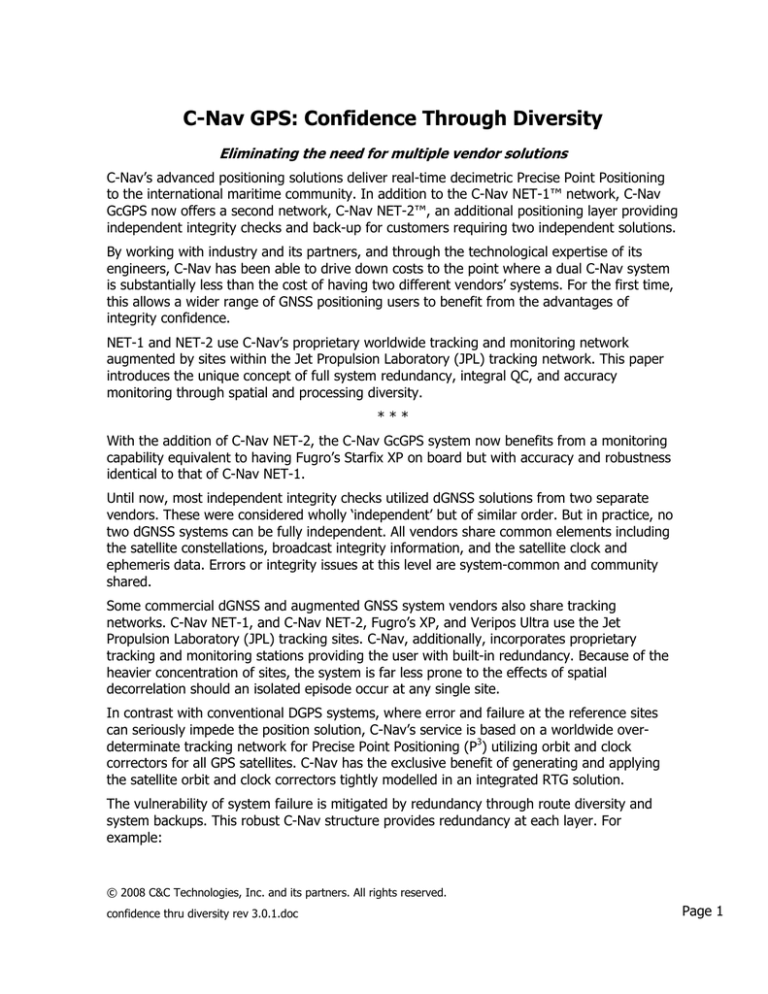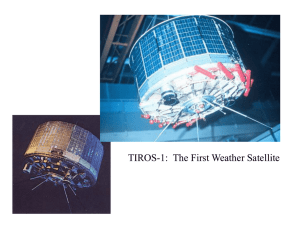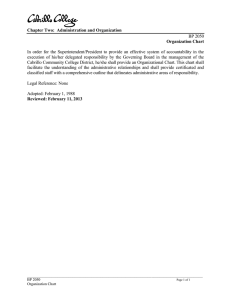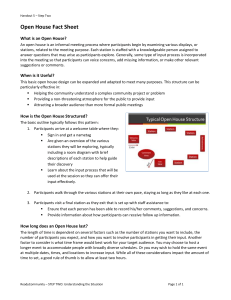
C-Nav GPS: Confidence Through Diversity
Eliminating the need for multiple vendor solutions
C-Nav’s advanced positioning solutions deliver real-time decimetric Precise Point Positioning
to the international maritime community. In addition to the C-Nav NET-1™ network, C-Nav
GcGPS now offers a second network, C-Nav NET-2™, an additional positioning layer providing
independent integrity checks and back-up for customers requiring two independent solutions.
By working with industry and its partners, and through the technological expertise of its
engineers, C-Nav has been able to drive down costs to the point where a dual C-Nav system
is substantially less than the cost of having two different vendors’ systems. For the first time,
this allows a wider range of GNSS positioning users to benefit from the advantages of
integrity confidence.
NET-1 and NET-2 use C-Nav’s proprietary worldwide tracking and monitoring network
augmented by sites within the Jet Propulsion Laboratory (JPL) tracking network. This paper
introduces the unique concept of full system redundancy, integral QC, and accuracy
monitoring through spatial and processing diversity.
***
With the addition of C-Nav NET-2, the C-Nav GcGPS system now benefits from a monitoring
capability equivalent to having Fugro’s Starfix XP on board but with accuracy and robustness
identical to that of C-Nav NET-1.
Until now, most independent integrity checks utilized dGNSS solutions from two separate
vendors. These were considered wholly ‘independent’ but of similar order. But in practice, no
two dGNSS systems can be fully independent. All vendors share common elements including
the satellite constellations, broadcast integrity information, and the satellite clock and
ephemeris data. Errors or integrity issues at this level are system-common and community
shared.
Some commercial dGNSS and augmented GNSS system vendors also share tracking
networks. C-Nav NET-1, and C-Nav NET-2, Fugro’s XP, and Veripos Ultra use the Jet
Propulsion Laboratory (JPL) tracking sites. C-Nav, additionally, incorporates proprietary
tracking and monitoring stations providing the user with built-in redundancy. Because of the
heavier concentration of sites, the system is far less prone to the effects of spatial
decorrelation should an isolated episode occur at any single site.
In contrast with conventional DGPS systems, where error and failure at the reference sites
can seriously impede the position solution, C-Nav’s service is based on a worldwide overdeterminate tracking network for Precise Point Positioning (P3) utilizing orbit and clock
correctors for all GPS satellites. C-Nav has the exclusive benefit of generating and applying
the satellite orbit and clock correctors tightly modelled in an integrated RTG solution.
The vulnerability of system failure is mitigated by redundancy through route diversity and
system backups. This robust C-Nav structure provides redundancy at each layer. For
example:
© 2008 C&C Technologies, Inc. and its partners. All rights reserved.
confidence thru diversity rev 3.0.1.doc
Page 1
•
Tracking stations have a 6:1 excess ratio; stations can be removed from the solution
if their data is questionable or inaccessible without affecting system performance.
•
NET-1 and NET-2 provide independent communication links between the hubs and
the system users.
•
All C-Nav tracking stations have dual racks of equipment. In the event that
performance becomes questionable, a rack can be excluded without impacting the
solution.
•
Each C-Nav tracking station has multiple communication links to the Processing
Centers. In the event of a communications failure, an alternate method of
communication is automatically put on line.
•
Each system user may employ multiple and / or differing C-Nav receivers.
REAL-TIME GIPSY® (RTG)
Inherent errors and limitations associated with traditional DGPS reference stations are
eliminated with the C-Nav enhanced RTG solution. Operating at the fundamental GPS level,
each GPS satellite error source is evaluated independently - a major advance beyond earlier
DGPS ground-based augmentation systems.
The C-Nav ground infrastructure includes a global network of satellite tracking and systemmonitoring sites providing a quality controlled feedback loop. Two dedicated and independent
Processing Centers each employ an advanced proprietary version of the Jet Propulsion
Laboratory’s Real-Time GIPSY® (RTG) software.
The Processing Centers ensure that the six fully redundant L-band hi-power communication
satellites distribute validated correction data to C-Nav’s worldwide user community.
Table 1, C-Nav RTG - GNSS Fundamental Augmentation Configuration:
Correction
Satellite orbit
Satellite clock
Atmospherics
Multi-path
Receiver
Earth Tides
Implementation
1 Minute RTG
1-2 Second RTG
C-Nav L1/L2 Receiver Hardware
Multi-Path Mitigation Software (patented) and antenna technology
C-Nav 16 channel L1/L2/L-band hardware
Sinko’s model and ocean loading incorporated in the receiver
C-Nav’s GNSS comprises of four main segments:
−
GROUND: Global network of reference stations and integrity monitors
−
CONTROL: Orbit and clock processing
−
SPACE: Signal distribution
−
USER: Data acquisition and application (receivers), plus access to system monitor
network updated every minute from the C-Nav website
GROUND SEGMENT
The C-Nav ground network comprises of reference / monitor stations equipped with two dualfrequency GPS receivers (each hereafter referred to as ‘Receiver A’ and ‘Receiver B’). The
© 2008 C&C Technologies, Inc. and its partners. All rights reserved.
confidence thru diversity rev 3.0.1.doc
Page 2
observations from both receivers are transmitted to the two Processing Centers. Selected
stations within the network are additionally equipped with dual-frequency user hardware to
monitor the L-Band signal strength to measure and compare real-time position, accuracy, and
precision.
The number of GNSS receivers at each ground station, compounded by the number of
simultaneous observations from each GNSS satellite by the station network (typically better
than seven), and augmented by the JPL ground network provides an unprecedented level of
over-capacity and system robustness. Each C-Nav station is located within a secure facility,
with secure communication data links to the control segment, and backed up by VSAT or
ISDN and uninterruptable power supplies.
Table 2, reference / monitor stations (April 2008):
1
2
3
4
5
6
7
8
9
10
11
12
13
14
15
16
17
18
19
20
21
22
Antarctica, Ross Island
Argentina, Rosario
Australia, Brisbane
Australia, Sydney
Australia, Melbourne
Australia, Perth – C
Australia, Perth – M
Australia, Tidbinbilla
Brazil, Catalão
Brazil, Horizontina
Brazil, Sapezal
Diego Garcia
Chile, Santiago
China, Jiamusi
Colombia, Bogota
Cook Islands, Rarotonga
Ecuador, Galapagos
Finland, Tampere
Germany, Zweibrucken
Greenland, Kellyville
Guam, Dededo
India, Bangalore
23
24
25
26
27
28
29
30
31
32
33
34
35
36
37
38
39
40
41
42
43
44
Japan, Tokyo
Japan, Usuda
Kyrghystan, Bishkek
Netherlands, Burum
Netherlands, Delft
New Z’land, Auckland
Peru, Arequipa
Philippines, Quezon City
Russia, Irkutsk
Russia, Moscow
Russia, Norilsk
Russia, Petpropavlovsk
Russia, Urals Ridge
Russia, Yakutsk
S Africa, Johannesburg
S Africa, Krugersdorp
S Africa, Sutherland
Spain, Madrid
Spain, Madrid
Uganda, Mbarara
USA, Fairbanks
USA, Torrance
45
46
47
48
49
50
51
52
53
54
55
56
57
58
59
60
61
62
63
64
65
66
USA,
USA,
USA,
USA,
USA,
USA,
USA,
USA,
USA,
USA,
USA,
USA,
USA,
USA,
USA,
USA,
USA,
USA,
USA,
USA,
USA,
USA,
Goldstone
Pasadena (JPL)
Pasadena (JPL)
Quincy
Colorado Springs
NIST, Boulder
Belle Glade
Mauna Kea
Kokee Park
Moline
Greenbelt
Fargo
Pietown
Syracuse
Lamont
Portland
Puerto Rico
Weslaco
Christiansted
Brewster
Woodinville
USNO Master Clock
Each GPS satellite is tracked by multiple Reference / Monitor Stations and can maintain P3
precision even with a number of stations out of commission (an event that has never
happened). This level of over-capacity will soon be further improved when the next
generation of C-Nav RTG precision is introduced.
CONTROL SEGMENT
The control segment comprises two independent Processing Centers, each fitted with dual
sets of processing hardware. One center is located in Torrance, California and the other in
Moline, Illinois. The Processing Centers are interconnected by high-speed frame-relay feeds
and receive the full complement of reference station data.
Each Processing Center makes an independent selection between Receiver A and Receiver B,
producing independent sets of RTG correction values for each GPS SV. After the Processing
Centers have exchanged and compared their correctors for validation, each sends its
correctors independently to the Land Earth Stations (LES) for uplink to the NET-1 and NET-2
© 2008 C&C Technologies, Inc. and its partners. All rights reserved.
confidence thru diversity rev 3.0.1.doc
Page 3
communication satellite constellations. Data flow between the Control Centers and the Land
Earth Stations is via secure high-speed cable and VSAT with ISDN backups.
SPACE SEGMENT: NET-1 & NET-2
Figure 1 C-Nav NET-1 and NET-2 world coverage
The C-Nav space segment consists of six geostationary communication satellites providing
redundant Hi-power L-Band distribution between approximately 75° north and 75° south
latitudes. The six communication satellites are constantly monitored by the Processing
Centers to ensure service continuity. Additionally, various ground stations monitor the
received L-Band signal strength to confirm satellite transmission signal levels, veracity, and
precision of received data. The satellite constellation is up-linked through six Land Earth
Stations configured as NET-1 and NET-2.
Table 4, C-Nav’s six geostationary communication satellites:
Land Earth Station
Satellite
Satellite longitude
NET-1
Laurentides, Canada
Burum, NL
Perth, WA
Inmarsat High Power
Inmarsat High Power
Inmarsat High Power
Santa Paula, Ca, USA
Southbury, Cn, USA
Auckland, NZ
Inmarsat High Power
Inmarsat High Power
Inmarsat High Power
98°W
25°E
109°E
NET-2
142°W
15.5°W
143.5°E
USER SEGMENT RECEIVER TECHNOLOGY
C-Nav2050:
© 2008 C&C Technologies, Inc. and its partners. All rights reserved.
confidence thru diversity rev 3.0.1.doc
Page 2
At the heart of every C-Nav2050 dual-frequency receiver is the Touchstone-4 ASIC. This 26channel dual-frequency receiver is integrated with a proprietary L-Band receiver and tri-band
antenna. C-Nav2050 dual-frequency receivers measure the ionospheric delay for each
satellite while the tropospheric zenith delays are
calculated from a multi-state time and position model
aided by redundant satellite observables.
Typically, a C-Nav2050 dual-frequency receiver
operating on NET-1 or NET-2 will provide better than
10 cm horizontal and 15 cm vertical accuracy. Unlike
DGPS positions that are relative to reference station
locations, C-Nav produces absolute ITRF 2005
positions, within geostationary satellite visibility,
anywhere, any time.
C-Nav1010:
The latest addition to the C-Nav hardware line-up is the CNav1010 L1 receiver. In common with the rest of the C-Nav
family of receivers, it integrates the C-Nav correctors in
addition to WAAS / EGNOS data. The C-Nav1010 is a tightly
integrated package designed to maximize precision and
stability in noisy and hostile environments. Offering submeter accuracy worldwide, and at a lower cost than the highperformance 2050, the 1010 is a rugged and reliable unit
designed for maximum productivity with minimal setup time.
C-Nav2000:
The C-Nav2000 is a ‘smart-antenna’ design with an integrated dual-frequency GPS, L-Band
demodulator, and a tri-band antenna in one package. The C-Nav2000 remains a key product
for surveyors requiring two independent dual-frequency C-Nav solutions. The C-Nav2000 was
introduced to the marine market in 2000. Although no longer manufactured, there are many
hundreds of C-Nav2000 units working in the international marine market with lease units
available through survey equipment suppliers.
SUMMARY
The C-Nav Precise Point Positioning solution has been purpose-designed to provide the
marine sector with the most accurate, reliable, and integrity-independent dGNSS system in
the world.
The addition of C-Nav NET-2 to the worldwide C-Nav gcGPS network provides additional
levels of security, integrity and confidence to an already resilient and well-managed network.
C-Nav GPS receivers can be licensed to operate using NET-1 or NET-2 correction signals
either individually or with both Networks to provide maximum reliability and technical
redundancy. Vessels can be equipped with two separate C-Nav positioning systems; one
dedicated to NET-1 and the other to NET-2 providing two independent delivery solutions.
© 2008 C&C Technologies, Inc. and its partners. All rights reserved.
confidence thru diversity rev 3.0.1.doc
Page 3
Choices of three different integrated receivers are also available. Incorporating different GPS
engines, each receiver provides the user with exceptional options for independent system
selection, comparison, confidence, and integrity.
C-Nav element
Ground segment
Redundancy
66 stations (excess ratio
6:1)
Communications
(to/from Control
Centers)
Processing Centers
Satellites
Robustness
Independent
measurements
Solutions
RTG measures and
real-time monitoring
Multi-routes with ISDN back-up
2x on-line + 1x
(independently
operated) back-up
Independent selection
of A or B reference
receivers
Communications
(to/from LES)
Land Earth Stations
Resilience
2x receivers per CNav station
2x production layers
/ Control Center
Independent RTG
generation /
Processing Centre
Independence
2x RTG generation
and Real-Time
monitoring
Multi-routes + VSAT with ISDN back-up
Minimum 2x LES per
Ocean Region
NET-1
&
NET-2
Independent selection
of RTG correctors for
2x production layers
uplink i.e. four
/ LES
permutations per
Ocean Region
Minimum 2 Satellites per Ocean Region.
NET-1
&
NET-2
Standby channels on back-up SVs
Example user hardware permutations
Receivers / user
configurations
NET-1
NET-2
1
2
3
4
5
6
7
2x 2050
1x 2050
1x 2050
1x 1010
2x 1010
1 x 2000
1x 2050
2x 2050
1x 1010
1x 2050
2x 1010
1 x 2050
Real-Time
monitoring
RTG
WAAS/EGNOS
RTK
2050 / 1010 / 2000
2050 / 1010
2050 / 1010
2050 / 1010
2050 / 1010
2050 / 2000
1010
© 2008 C&C Technologies, Inc. and its partners. All rights reserved.
confidence thru diversity rev 3.0.1.doc
Page 4



